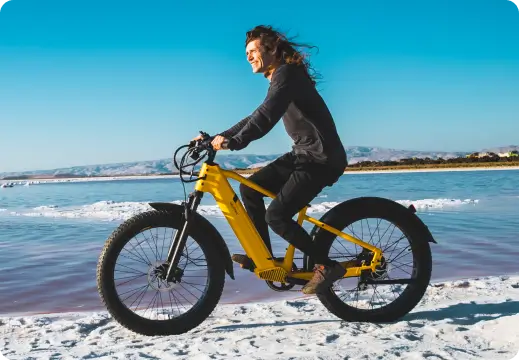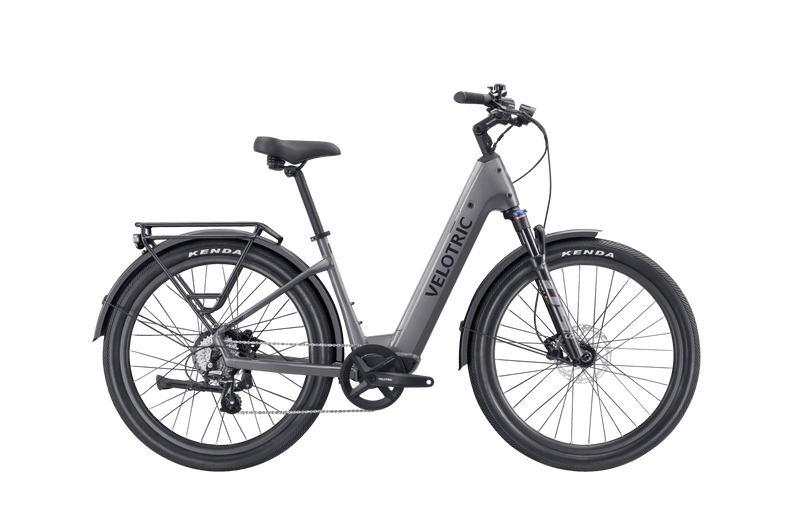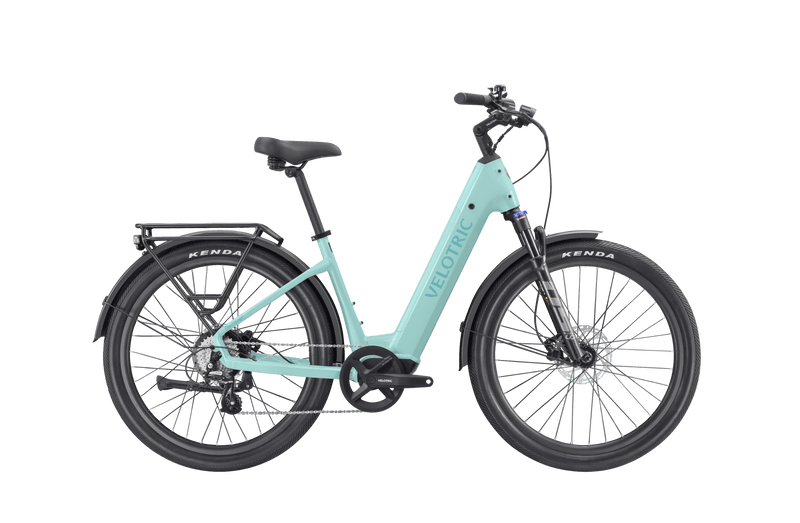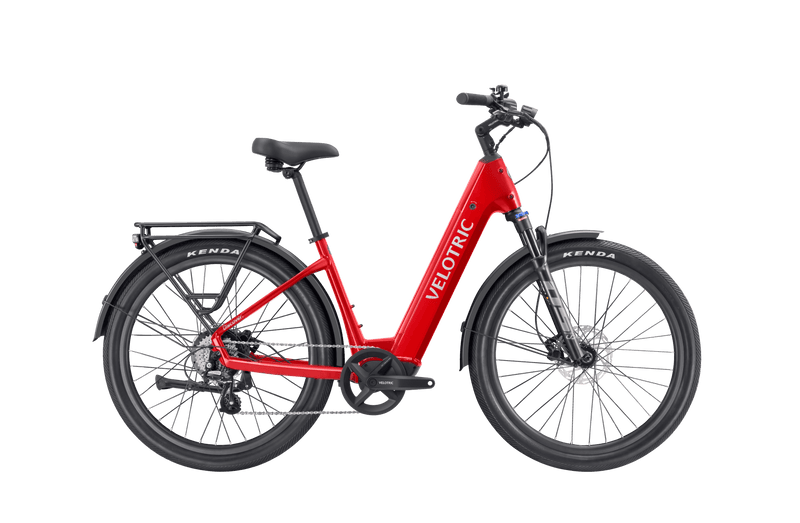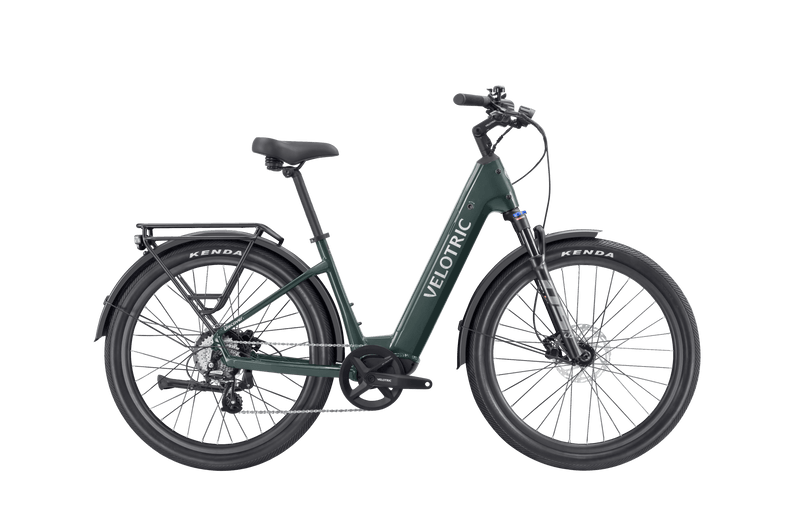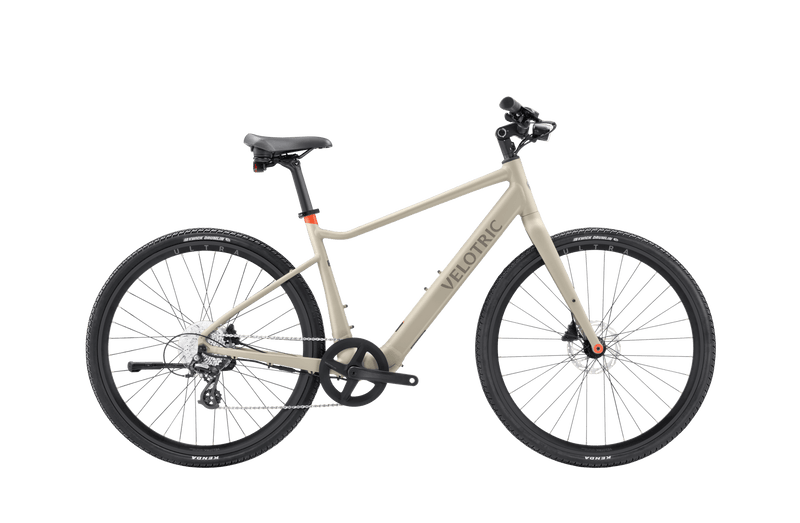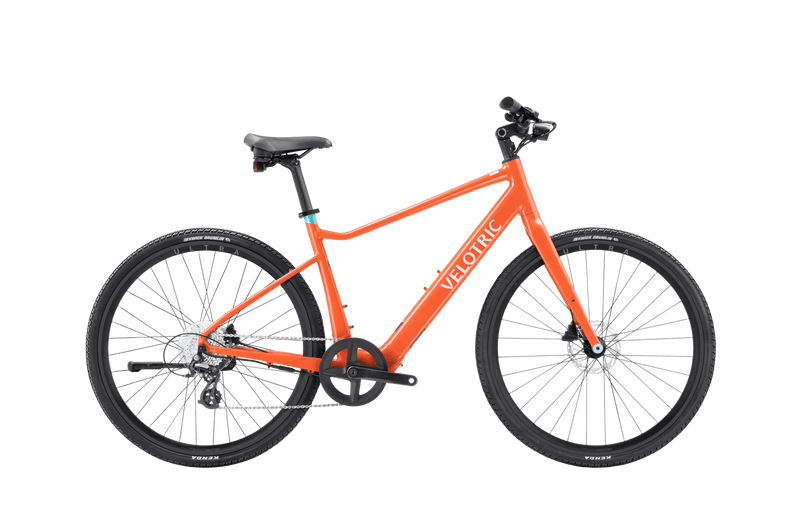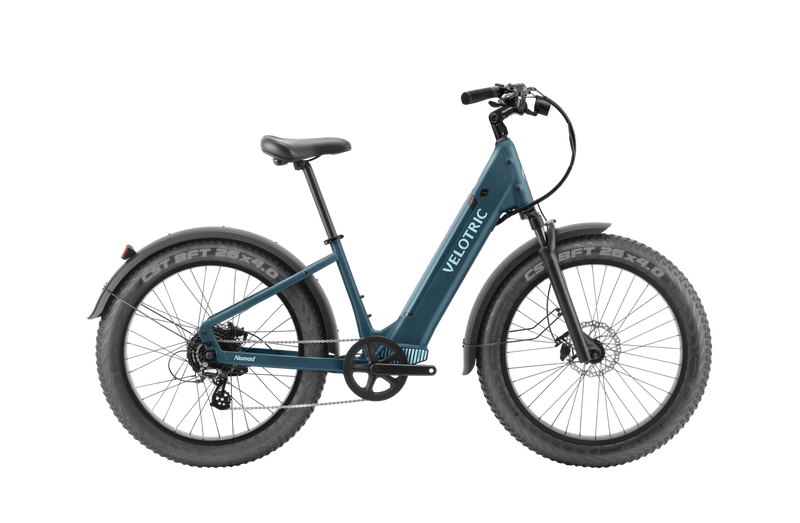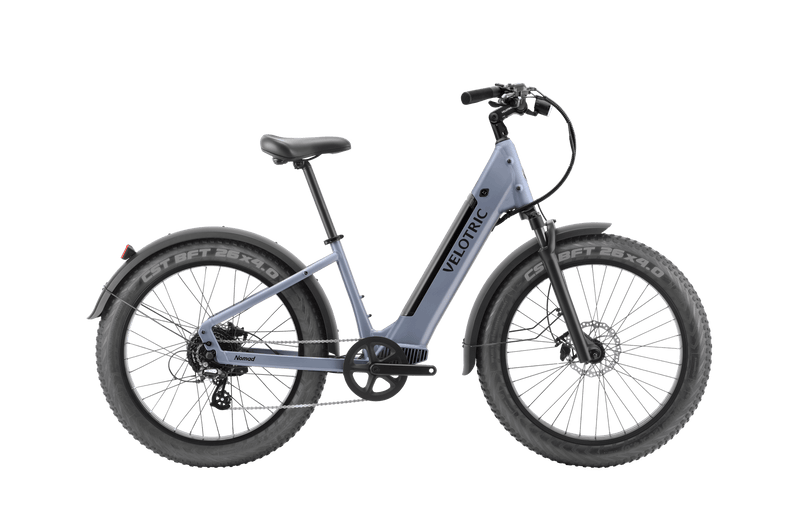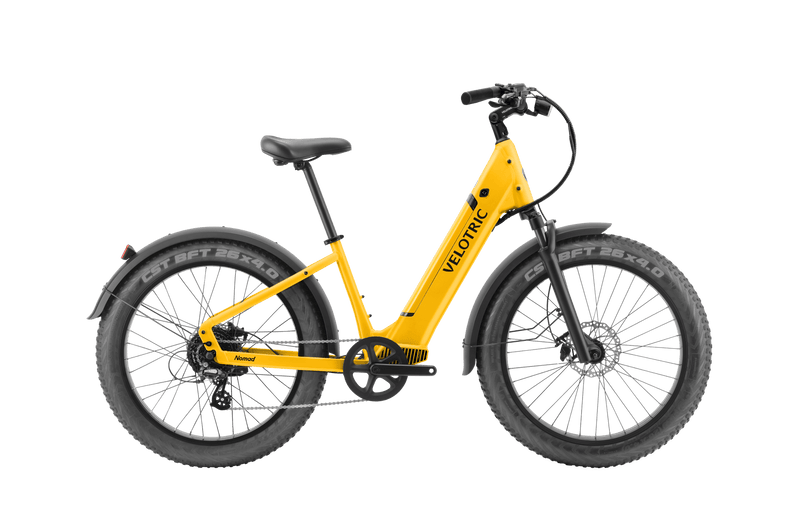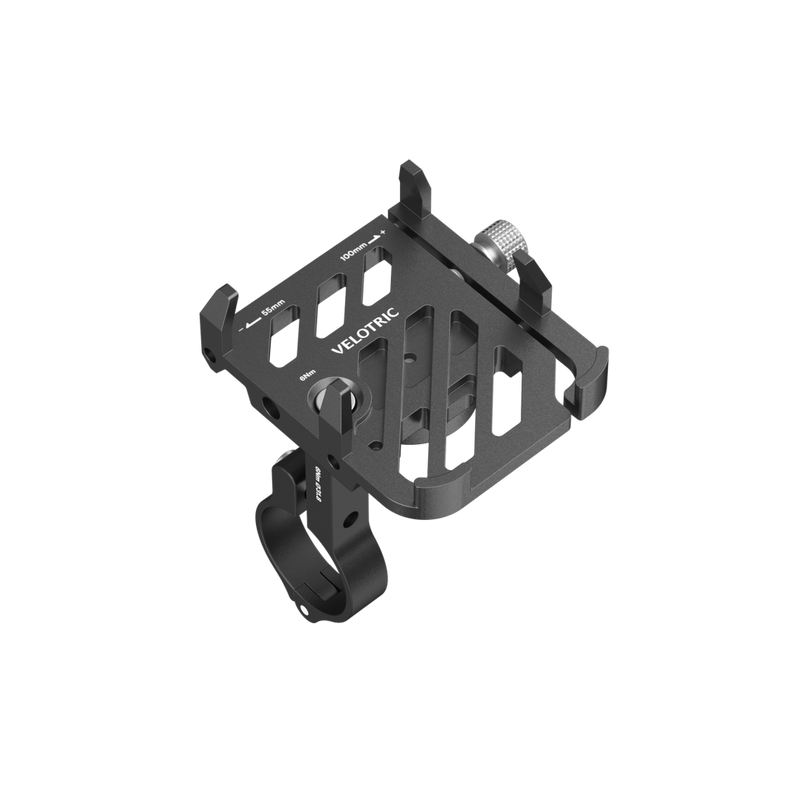With pedal assist, e-bikes let cyclists cover greater distances at higher speeds — and choose how hard they want to work while doing it. With an electric bicycle, you can sit back and enjoy a relaxing bike ride through gorgeous scenery or push yourself through bike trails in record time.
It’s no wonder bicyclists are buying more and more electric bikes. E-bikes are better for the environment than cars, faster than traditional bikes, and riding an e-bike with motor assistance can give people with health issues (like arthritis) a way to enjoy cycling.
In this article, we’ll introduce you to the classes of e-bikes so that you can find the best one for your needs.
What are the three classes of e-bikes?
Most states in the United States define e-bikes as vehicles with up to three wheels, operative pedals, a saddle, and an electric motor that can have up to around 750 watts of power (1 horsepower).
For the most part, e-bikes are considered bicycles rather than motor vehicles, even though they use motor power — but that’s not always the case.
States can create e-bike laws, and cities may also have local laws. Several state park trails, for instance, have laws that require e-bikes to remain on roadways designed for motor vehicles — like electric scooters and mopeds. Some biking areas even have laws that restrict certain classes of e-bikes.
There are three classes of e-bikes. In the next few sections, we’ll go over the class system, tell you what each class means, and review the advantages and disadvantages of each one.
Class 1 e-bikes
A Class 1 e-bike has pedal assist. This means the motor only helps propel the bike forward when the user is pedaling. The low-power motor assists the cyclist until the bike hits a speed of 20 miles per hour (mph). When that happens, the motor shuts off.
Different e-bikes offer different amounts of assistance. You can control the amount of help you get. Some e-bikes offer a boost of multiple times the force you’re putting in, meaning you likely won’t have to pedal very hard, but you can’t be completely passive while riding a Class 1 e-bike.
Class 1 electric bicycles are the most widely accepted e-bikes. In many states, like California, Class 1 e-bikes are permitted in almost all the same places as traditional bicycles, but exceptions exist. Some localities still see e-bikes more as motor vehicles and only allow them on motor trails.
Benefits and limitations of Class 1 e-bikes
Here are some of the best things about Class 1 e-bikes:
- Greater acceptance. You can ride a Class 1e-bike in most of the same bike lanes, trails, and even sidewalks in many locations where you can ride a human-powered bike (although there are exceptions).
- A more efficient motor. A Class 1pedal-assist e-bike travels at a low speed and doesn’t need to be as powerful as a Class 2 or Class 3 motor. This means there’s less strain on the battery, and the e-bike can go farther on a single charge.
- Anyone can ride one. There’s no age requirement for Class 1e-bike riders.
Here are a few disadvantages of Class 1 e-bikes:
- They’re not allowed everywhere. State and local land managers can restrict e-bike usage in areas if they feel it threatens public safety or natural lands. For example, many state park superintendents restrict all e-bikes to only motor pathways. Check out our guide to e-bikes in national and state parks.
- Greater effort. You have to pedal. If you’re looking for a bike that does most of the work while going uphill, for example, a Class 1e-bike probably isn’t for you.
- Lower assisted speed. A Class 1e-bike stops helping you once you reach 20 mph. If you want assistance beyond that, you’ll need to get a Class 3.
Class 2 e-bikes
A Class 2 e-bike has a throttle-assisted motor, which can push the bike forward even when you aren’t pedaling. Like Class 1 e-bike motors, Class 2 motors stop helping when the bike reaches 20 mph.
With a Class 2 e-bike, you can give your legs a rest during a strenuous ride without having to stop. Or you can just let the bike carry you for a bit while you check out some scenery in the great outdoors. However, using the throttle feature for extended periods can cause your e-bike battery to drain quickly.
Because Class 2 e-bike motors also shut off at 20 mph, they’re almost as widely accepted as Class 1 electric bikes. You can ride them in most city bike lanes and on various bike trails.
However, some national and state parks (even ones that allow Class 1 e-bikes) don’t allow Class 2 e-bikes because the throttle function can damage natural surface trails.
Benefits and limitations of Class 2 e-bikes
Here are some of the best things about Class 2 electric bikes:
- Wide acceptance. Class 2 bikes are allowed almost everywhere that Class 1 bikes are allowed, with a few exceptions.
- Less effort. If you’re tired or want to enjoy the scenery, a Class 2 e-bike can do most of the work when needed.
- Anyone can ride one. There’s no age requirement for Class 2 e-bikes.
Here are a few disadvantages of Class 2 e-bikes:
- Not allowed everywhere. Some land managers don’t allow Class 2 e-bikes on certain land because they believe the bikes cause damage to nature trails and can be unsafe for the public.
- Easier to lose focus. Without your legs engaged in pedaling, it’s easy to zone out while you’re riding, which can increase your risk of having an accident. Pay attention to where you are going when on your e-bike.
- Less efficient. Using the throttle function for long periods can be tempting, but the more you do, the quicker you drain the battery. Some parks even have time limits for how long you can use the throttle.
Class 3 e-bikes
A Class 3 e-bike has a pedal-assist motor similar to a Class 1 bike. However, a Class 3 motor is typically much more powerful and provides assistance until the bike reaches 28 mph.
If you need a speedy city bike, a Class 3 bike might be right up your alley. It can help you keep up with traffic or travel long distances more efficiently. Class 3 e-bikes are also great for commuting to work or getting across town in a hurry.
Unfortunately, when it comes to e-bikes, more speed means more restrictions. It’s pretty rare to find a national or state park that allows Class 3 e-bikes on anything other than trails designed for motor vehicles. Class 3 e-bikes are also required to have speedometers.
Benefits and limitations of Class 3 e-bikes
Here are some of the best things about Class 3 e-bikes:
- They’re fast. Class 3 e-bikes can help you go much faster than Class 1 and Class 2 bikes so you can ride through the city in a hurry.
- Ideal for commuting.Class 3e-bikes can get you to work more efficiently than the other classes.
- Less confusing bike regulations. With Class 3e-bikes, most states require you to stay on roadways and trails for motor vehicles.
Here are some disadvantages of Class 3 e-bikes:
- Viewed as motor vehicles. Legally, Class 3 bikes are viewed as motor vehicles. Don’t expect to ride your Class 3 bike on any natural mountain bike paths.
- More expensive. Along with a faster motor comes a higher price tag. Class 3e-bikes generally cost more than Class 1 or Class 2 bikes.
- More dangerous.Class 3 bikes have a higher top speed, which means a fall can cause more damage. For this reason, most states have laws that Class 3 riders need to be at least 14 years of age (older in some states) and wear helmets.
Choosing the right e-bike class for your needs
With different types of e-bikes, how can you choose the right one for you? The first step in choosing an e-bike class is deciding your needs.
If you want to hit the nature trails, a Class 1 e-bike is allowed in more places. If you want to drift along a bike path without pedaling as hard, a Class 2 e-bike with throttle assist can help you. If you want to commute to work at maximum speed, a Class 3 bike will get you there.
Just remember that not all classes of e-bikes are allowed everywhere. If you plan on riding your e-bike somewhere, it’s a good idea to check with the land management there to see if it’s OK. And wherever you ride, protect your head — whether your state has specific helmet laws.
Get the best e-bike for your needs from Velotric
Are you ready to hit the bike paths on an awesome new e-bike? Velotric has you covered. Whatever your cycling goals are, we have the best electric bikes to help you reach them.
Our elite bikes come in high-step and step-through frames and reliable hydraulic disc brakes to help you stop on a dime. Each of our e-bikes also has an enduring 48V 14.4Ah Underwriters Laboratory (UL2271) certified battery — and an ultra-comfortable saddle. Additionally, Discover 1’s Step-Thru model is already UL2849 certified, and the Nomad 1 is currently undergoing this certification.
Do you need a bike to weave through town? The Discover 1 has a trim design, an energy-saving 500/900W rated/peak motor, and can take you 65 miles down the road on just one charge.
Do you need a bike to help you rip through rough trails? The Nomad 1 has fat wheels to help you stay up, a powerful 750/1,200W rated/peak motor, and can get you through 55 miles of off-road trails on one charge (the lower maximum mileage is due to the heavier motor).
Get the right e-bike for your adventures from Velotric today!






































